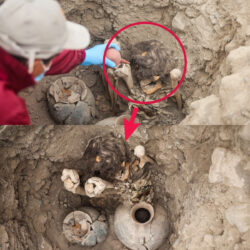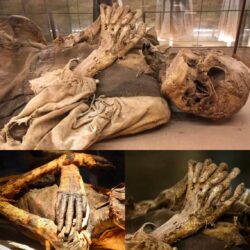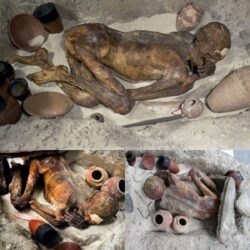There are some wonders in life that we can only observe and not fully explain. The legend of the Hope Diamond is much the same. It is a famous diamond not only for its value but also for the captivating stories woven around its mystical blue color.

Where does the Hope Diamond come from?
For many years, based on speculation, the Hope Diamond was believed to have been discovered in India, a widely accepted origin. However, researchers have spent years studying and analyzing, and they have determined that this diamond dates back to 1668. These findings affirm that the Hope Diamond is one of the prized gems of France.

According to LiveScience, the merchant Jean Baptiste Tavernier stole this stone from the eye of a Hindu statue, brought it to France, and sold it to King Louis XIV. It was then cut into a 69-carat stone known as the French Blue, and was stolen during the French Revolution after Louis was executed. This diamond disappeared for several decades and finally resurfaced in London. The tycoon Henry Philip Hope purchased this now-reduced stone in 1839. Over the years, the Hope Diamond changed hands multiple times.

Hope’s son, Lord Francis, was forced to sell it when he went bankrupt, and it was eventually bought by an American jeweler. The next owner was Evalyn Walsh McLean of Washington, who founded the stone. From the time she bought the diamond in 1912, her life unfolded with a series of tragic events.
The stunning appearance of the Hope Diamond
The Hope Diamond weighs 45.52 carats, features a deep blue color, and is the largest diamond ever known. Pierre Cartier designed a magnificent setting for the stone, surrounded by 16 white pear-shaped and cushion-cut diamonds, hanging on a chain with 45 white diamonds.
It is officially classified as a fancy dark grayish-blue diamond. Therefore, it is unclear why it was originally described as being violet-blue.

However, another study from the Smithsonian shows that if exposed to ultraviolet light for a certain period, the Hope Diamond exhibits a red phosphorescence for several seconds. Under a microscope, the blue of the stone reveals hints of violet not visible to the naked eye. Perhaps, this violet was more apparent before the stone was recut.
The terrifying curse of the Hope Diamond
Like many other famous diamonds in history, this blue diamond also seems to bring tragedies to its owners.
Many believe that after Tavernier picked up the gem from a Hindu statue, he was torn apart by wild dogs. This is considered the price for his theft. However, other stories suggest that Tavernier died peacefully in Russia after he sold the gem to King Louis XIV.

There are many other tragic stories related to the Hope Diamond. For example, PBS points out that Louis XIV died of gangrene, a terrible disease, after owning the diamond. The king’s mistress also suffered misfortune while wearing the Hope Diamond.
After Louis XIV’s death, the diamond was passed on to King Louis XV (Louis XIV’s great-grandson), and then to Louis XVI (Louis XV’s grandson). Except for one son who lived to 50, all of Louis XIV’s children died young. Louis XV died of smallpox along with three of his children. Louis XVI and his wife, Queen Marie Antoinette, were executed by guillotine.

Princess de Lamballe, a member of the royal family, also wore it and was later attacked by a mob.
The tragedies did not stop there, as PBS reported that a Dutch jeweler who acquired the Hope Diamond in the early 1800s was robbed and killed by his own son, Hendrik, who committed suicide in 1830.
.webp)
Other misfortunes include King George IV, who died in debt while owning the stone; Lord Francis Hope, who suffered through scandalous affairs, a miserable marriage, and financial struggles; and his wife, May Yohe, who died in poverty. Jacques Colot, the next owner, reportedly went mad and committed suicide, and following him, Prince Ivan Kanitovski was killed by Russian revolutionaries.
After acquiring the diamond from Cartier in 1912 for $180,000, the life of Evalyn Walsh McLean took a tragic turn.

Her daughter died at the age of 25, her eldest son died in a car accident at the age of 9, and although her husband left her for another woman, he later developed brain atrophy and ultimately suffered from mental illness.
The National Postal Museum explains that McLean continued to wear the diamond and refused to sell it, fearing that bad things would happen to others. The Hope Diamond was found in her $4 million jewelry collection, kept in a shoebox in her bedroom after her death in 1947.

How much is the Hope Diamond worth?
Due to its unique color and substantial size, the Hope Diamond is currently known as the most expensive blue diamond in the world. In reality, the exact value of the Hope Diamond cannot be determined, but it is estimated to be around 400 million US dollars.
Many details contribute to the estimated price of the Hope Diamond. In 1988, the Gemological Institute of America determined that this diamond weighs 45.54 carats – about the size of a walnut. In addition to its impressive size, the diamond boasts a distinctively striking color.

Even more noteworthy is the diamond’s fluorescence. The Hope Diamond emits a brilliant red light when exposed to short-wave ultraviolet light, and this effect continues for a short period even after the light source is removed.
Although some believe this is a sign of its inherent curse, Exploring Life’s Mysteries explained that it is a sign of boron and nitrogen.
This diamond has been classified as a Type IIb semiconductor diamond.
Who currently owns the Hope Diamond?
Due to the fate of those who have previously owned the Hope Diamond, it is currently housed in the Smithsonian Museum.
Parade reports that Harry Winston, a renowned jeweler, purchased the stone in 1949 from McLean’s collection, following her death. In the following decades, the diamond was exhibited in many places.
In 1958, Winston decided to donate the Hope Diamond to the Smithsonian Institute. He believed that this was the safest way to transport the stone. Many citizens wrote to the Smithsonian, as well as to President Eisenhower, pleading with the museum not to accept the diamond for fear that it would curse the American people.
Smithsonian Magazine adds that since then, the Hope Diamond has only left the museum four times. In 1962, it was displayed at the Louvre; in 1965, it was exhibited at the Rand Easter Show in Johannesburg; in 1984, Winston borrowed the diamond to celebrate the 50th anniversary of his company; and in 1996, it was briefly returned to Winston for refurbishment.
The Hope Diamond, housed in the Smithsonian, remains a captivating blend of beauty and mystery. Its legendary curse and illustrious past continue to draw admirers from around the world, a testament to the timeless allure of historical treasures. As it glimmers behind glass, the diamond invites us to marvel not only at its aesthetic charm but also at the rich tapestry of stories woven through its centuries-old legacy.





